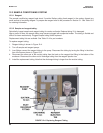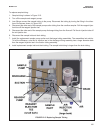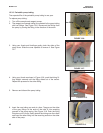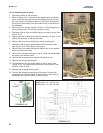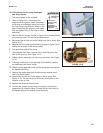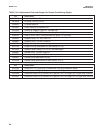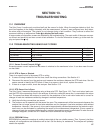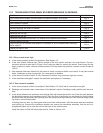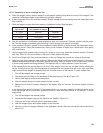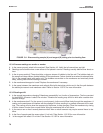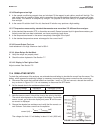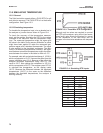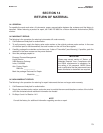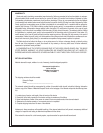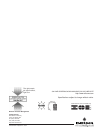
71
MODEL TCL SECTION 13
TROUBLESHOOTING
13.3.6 Readings are too high
A. Is the sample conditioning reagent clear and colorless? If the reagent is pale yellow, results will be high. The
pale yellow color is caused by iodine, which comes from the reaction between atmospheric oxygen and potas-
sium iodide. The reaction is catalyzed by sunlight. The purpose of the blue carboy is to protect the reagent
from sunlight.
B. Is the sensor fill solution fresh? An old, discolored fill solution may produce a high reading.
13.3.7 Temperature measured by standard thermometer was more than 3°C different from analyzer.
A. Is the standard thermometer, RTD, or thermistor accurate? General purpose liquid-in-glass thermometers, par-
ticularly ones that have been mistreated, can have surprisingly large errors.
B. Is the temperature element in the sensor completely submerged in the liquid?
C. Is the standard temperature sensor submerged to the correct level?
13.3.8 Current Output Too Low.
Load resistance is too high. Maximum load is 600 Ω.
13.3.9 Alarm Relays Do Not Work
A. Verify the relays are properly wired.
B. Check the alarm hysteresis. See Section 7.7.
13.3.10 Display is Too Light or Dark.
Adjust contrast. See Section 7.5.
13.4 SIMULATING INPUTS
To check the performance of the analyzer, use a decade box and battery to simulate the current from the sensor. The
battery, which opposes the polarizing voltage, is necessary to ensure that the sensor current has the correct sign.
A. Disconnect the anode and cathode leads from terminals 1 and 2 on TB3 and connect a decade box and bat-
tery as shown in Figure 13-2. It is not necessary to disconnect the RTD leads.
B. Set the decade box to the resistance shown below.
C. Note the sensor current. It should be close to the value in the table.
The actual value depends on the voltage of the battery. To view the
sensor current, go to the main display and press until the sen-
sor current is displayed.
D. Change the decade box resistance and verify that the correct cur-
rent is shown. Calculate current from the equation:
current (nA) =
The voltage of a fresh 1.5 volt battery is about 1.6 volt (1600 mV).
FIGURE 13-2. Simulating Chlorine
Polarizing Voltage Resistance Expected Current
200 mV 2.8 MΩ 500 nA
V
battery
— V
polarizing
(mV)
resistance (MΩ)



